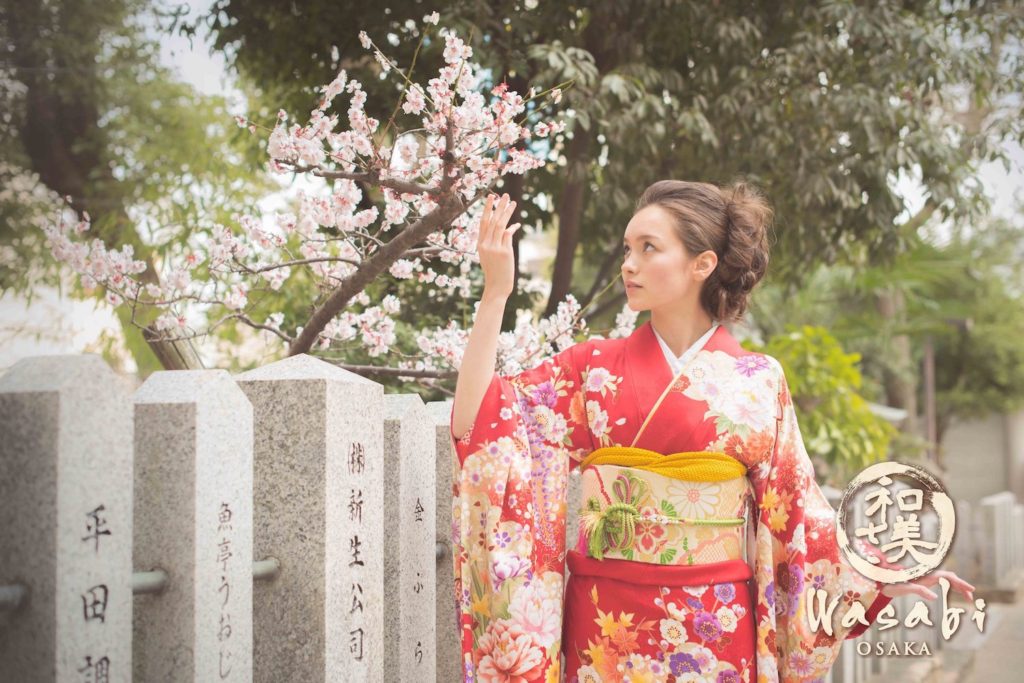They look great, but trying on a kimono – especially for the first time – can be tricky.
Visitors to our photo studio are given plenty of help dressing up. Over the years, we’ve shown hundreds of visitors to Osaka how to put on a traditional Japanese kimono properly.
We’ll let you in on some of our top tips and the little secrets to wearing a kimono:
Let’s start with a sturdy, straight collar
A piece of plastic (known as a ‘core’) inside the kimono’s collar keeps it in shape. You’ll know if there’s a core fitted, as the collar will feel hard to the touch. It won’t hurt or irritate you while you’re wearing the kimono, and it’ll look great in photos.
The collar tightness also makes a difference
A kimono isn’t designed to be a revealing outfit. For many people, that’s great! It keeps your arms and legs fully covered. But if you want to show some skin in your kimono, there’s no need to rip the front open. The more elegant way to wear a kimono exposes more of the back of your neck.
Wearing a kimono correctly makes you look more alive
Talking about the front of the kimono, always wrap it with the left side on top, over the right side. The other way around (right over left) is how we dress the dead. It’s common knowledge and natural to Japanese people, but maybe not so obvious to visitors.
Tie with whichever hand you’re more comfortable using
Right and left aren’t so rigid when it comes to tying your sash. If you’re right-handed, you’ll likely wrap it counter-clockwise – that’s called ‘Kanto-maki’, named after the east (right) side of Japan. ‘Kansai-maki’, the west side style, wraps clockwise and is much easier for left-handed people to tie.
Can’t see your waistline? That’s the point
The obi sash around your waist isn’t there to make you look thinner. In fact, it makes you the same width from top to bottom, like a beautiful kimono-wrapped sushi roll. For anyone with a thin waist (hourglass figure, etc.), we pad out the kimono to create a straight body shape.
Padding’s important to make your kimono look perfect
Maybe you’ve seen something that looks like a pillow or bag at the back of a kimono. That’s used to help tie the obi properly. It’s not there for storage, or to sleep on! Sometimes, people carry things inside the kimono’s long hanging sleeves instead. We’d also suggest a small bag, like a clutch.
And there’s a secret to holding your sash in place, too
To stop the obi from moving, extra bits of fabric are tied around and into the sash. Those also make it one of the most decorated parts of a fully fitted kimono. One common example: a special cord, called an obijime, that can be tied over the top and keep the obi secured.
We’re proud of our kimono know-how
Wearing an authentic kimono during your time in Japan’s an experience you won’t want to miss out on. Benefit from years of experience in both kimonos and photography at our Osaka studio.


